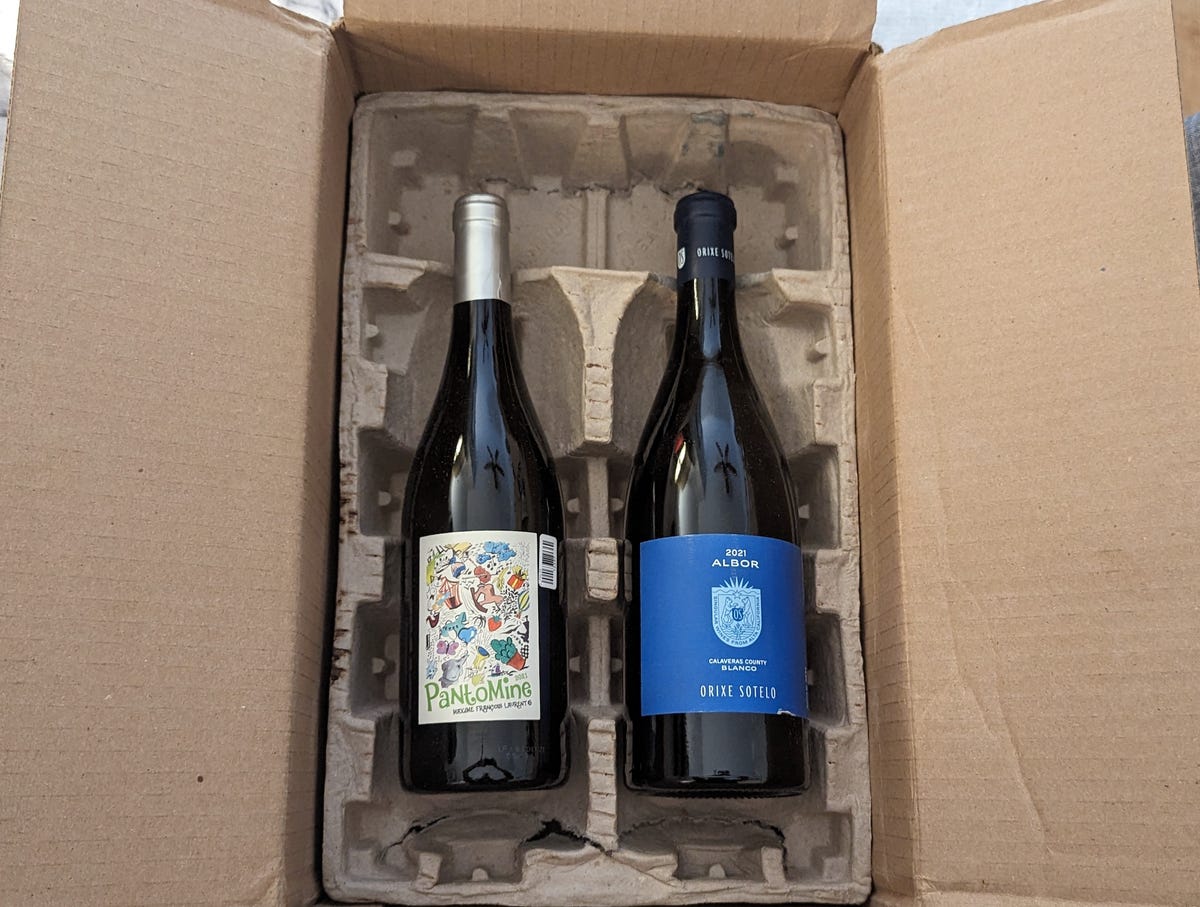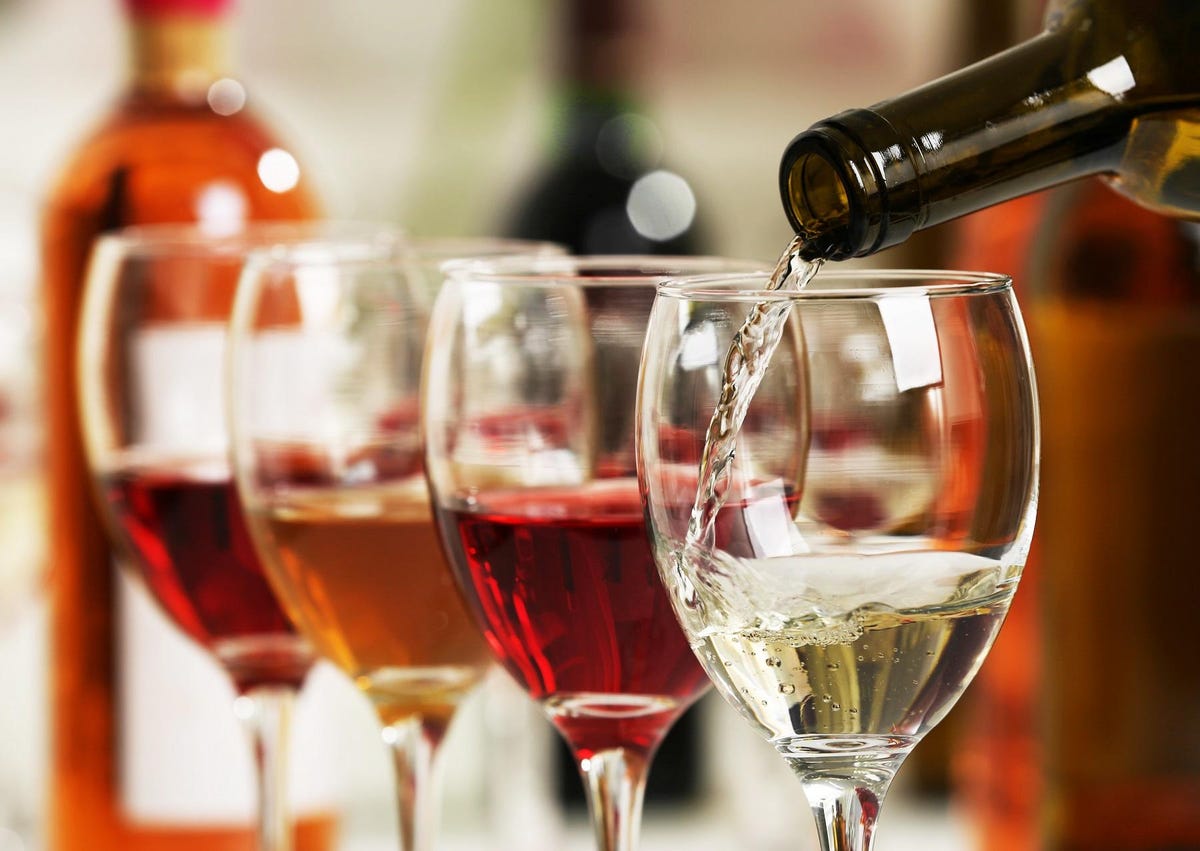Wasted wine is a tough pill to swallow, especially if it was a new wine you loved. Finding good wine for cheap helps soften the blow, but you can keep red, white and sparkling wine fresh for longer if you know how to store open bottles. Getting a few more days out of your merlot or Malbec might mean the difference between pouring down the hatch and down the drain.
We asked expert sommelier and wine educator Rachel Thralls for her tips on keeping your favorite adult beverage fresh for longer. And if you’re wondering if you should keep red wine in the fridge, you should. The cool temps help keep open wine fresh for longer, up to five days. Just make sure to let it come back down to an appropriate serving temperature before drinking.
How long wine lasts and how to properly store it

Not long after the cork is popped, all wine begins to deteriorate.
Once any bottle of wine stays open beyond the few hours it takes to breathe and decant, its quality begins to deteriorate. That’s why it is crucial to take some steps to preserve its longevity, should you want to finish the remaining liquid before it essentially turns to vinegar.
According to Thralls, each wine type requires different storage methods. Here’s a breakdown of the most common.
Sparkling wine
Days it will last in the fridge: 1-3

Sparkling wine has the shortest shelf lives of any wine.
“Sparkling wines lose their coronation quickly after opening,” stresses Thralls. “A traditional method sparkling wine such as Cava or Champagne (which have more atmospheres of pressure, aka more bubbles) will last a little longer than a tank method sparkling wine like Prosecco.”
Invest in a bouchon (sparkling wine stopper) for best results. If you’re really serious about preserving your Champagne, Coravin makes a bougie sparkling wine preservation system that pumps CO2 back into the bottle to extend its effervescent fridge life by weeks.
Light white, sweet white and rosé wines
Days it will last in the fridge: 4-5

Uncorked light white wines can go for as long as five days if kept cold.
“Most light white and rosé wines will be drinkable for up to a week when stored in your refrigerator with a cork,” advises Thralls. ” You’ll notice the taste will change subtly after the first day as the wine oxidizes. The overall fruit character of the wine will often diminish, becoming less vibrant.”
Full-bodied white wine
Days it will last in the fridge: 2-3

Fuller-bodied whites tend to lose their oomph a little faster.
“Full-bodied white wines such as oaked Chardonnay and Viognier tend to oxidize more quickly, because they see more oxygen during their pre-bottling aging process,” explains Thralls. “Be certain to always keep them corked and in the fridge. If you drink a lot of this type of wine, it’s a really smart idea to also invest in vacuum caps.”
Red wine
Days it will last in the fridge: 3-5

Open red wine should be stored in the fridge to preserve it and removed about 10 minutes before serving.
“Red wines can be stored in a cool, dark place with a cork or in your wine fridge or refrigerator,” says Thralls. “The more tannin and acidity the red wine has, the longer it tends to last after opening.”
For example, a lower tannin wine like Pinot Noir won’t last as long as rich reds like Cabernet Sauvignon.
“Some wines will even improve after the first day open,” Thralls adds. “If you don’t have a wine fridge, your regular fridge is better than letting the wine sit out in a 70-degree room. Just take the red wine out about 10 minutes before you want a glass so it warms up a little. The red wine will also open up in the glass.”
Tips for storing wine

How and where you store wine is important, both before and after opening.
While the aforementioned guidelines are helpful for any wine novice, Thralls suggests a few general rules to take into consideration with any opened bottle.
- Invest in a wine preserver. “They work very well for keeping wine after it’s been opened. You can use the cork and push it back in or try [a product such as] Repour, which removes the oxygen from the bottle.” Coravin wine systems are pricier but these high-tech units actually refill the bottle with argon gas, extending the life of red and white wine for up to a month.
- Store any open wine in the refrigerator. “Or a wine fridge, if you have one,” says Thralls. “This cold storage will slow down any development of the wine, keeping it fresh. The ideal cellar or wine fridge temperature is 55 degrees Fahrenheit.”
- Keep wine away from direct sunlight or sources of heat. “This includes above a refrigerator or oven. It will get ‘cooked’ and ruin the aroma and flavor.”
Ideal serving temperatures for serving wine

The Hyperchiller can help you chill warm wine to a proper serving temperature.
While one could argue that wine temperature depends on personal preference, there are optimal temperatures that somms and wine professionals aim for.
Generally, wine actually tastes better served slightly cool, which applies to both whites and reds. This $21 device can chill warm wine (or any other liquid) in seconds.
“The same ideology of experiencing coffees, teas and sparkling waters at different temperatures also applies to wine,” says Thralls, revealing that the more delicate floral aromatics in fine wines can actually be subdued at overly cool temperatures or burn off too quickly when the wine is too warm.
“If you drink affordable wine most of the time, serving it slightly chilled will disguise most ‘off’ aromas,” she shares. “A wine above 70 degrees Fahrenheit will start to smell more alcoholic because of increased ethanol evaporation that occurs as the temperature rises.”
Thralls notes that this is a good reason to not fill your wine glass up to the brim. “A typical serving of wine is about five ounces and a bottle of wine contains just over 25 ounces, so you should get about five glasses of wine per bottle,” she explains. “The extra space in a typical wine glass is designed to hold the aromas when you swirl and smell your wine, so try and save some space.”
The ideal serving temperatures for each type of wine

Yes, there’s an ideal temperature for serving every type of wine.
Champagne and sparkling wines
Affordable sparkling wines taste best served at 40-45 degrees F. If you have a high-quality, more expensive Champagne or sparkling wine, serve at ideal light white wine temperatures, which is slightly warmer.
Light white wines and rosés
Examples of light white wines are Sauvignon Blanc and Pinot Grigio. These wines are best served between 45-50 degrees F, slightly cooler than heavier white wines. Rosé wines also taste best and maintain their crispness and acidity at these temperatures.
Heavy whites and light reds
Heavier white wines, such as Chardonnay, taste well at a range of temperatures depending on someone’s personal preference, from 48-56 degrees F. Oak-aged whites’ fruit tends to taste better and when served slightly warmer. Lighter red wines such as Pinot Noir taste better at this cooler end of the spectrum.
Medium-bodied reds
Medium-bodied reds, such as Merlot, are best served right around 55 degrees F. This temperature is also the ideal cellar temperature. You can grab your bottle right out of your cellar and pour a glass. Keep in mind that wines tend to warm up in the glass, as well.
Full-bodied and aged reds
Full-bodied reds such as Cabernet Sauvignon, Syrah and Zinfandel are best served between 59-68 degrees F. But isn’t that too cold for a red wine? The wine will taste much better cool and, as Thrall mentioned, the glass will warm the wine, as well.
No matter how you swirl it, a good wine is one that doesn’t end up down the drain. If you must tap out and savor the remainder of your bottle for future imbibing pleasure, take all of these tips into consideration and you’ll never waste money (and precious alcohol) again. Cheers!
